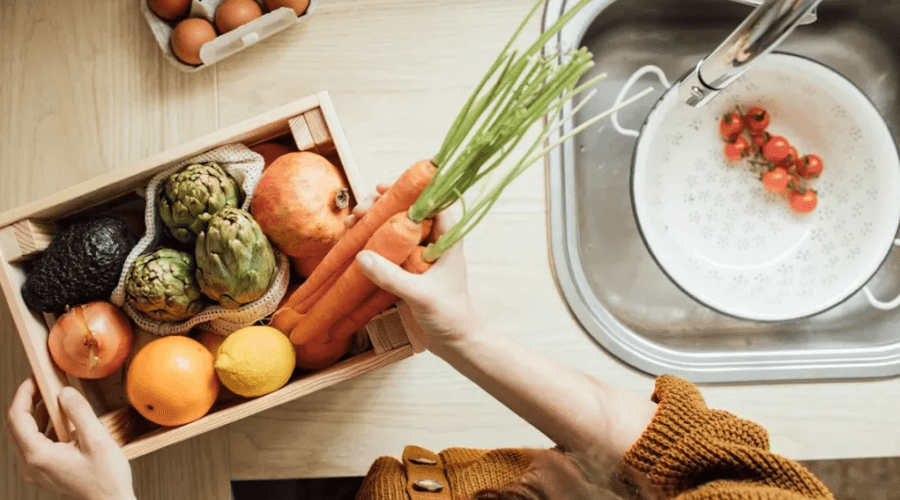The way we eat is evolving — and it’s about time. As climate change, food insecurity, and waste continue to challenge our planet, more people are turning toward sustainable eating. This shift isn’t just a lifestyle trend; it’s a necessary transformation shaping the future of the food industry. From plant-based diets to eco-conscious farming practices, sustainable eating is redefining what it means to enjoy food responsibly and deliciously.
In this guide, we’ll explore why eco-friendly diets are becoming the future of food, how the food industry trends are evolving, and what you can do to make more sustainable choices — without sacrificing flavor or nutrition.
1. What Is Sustainable Eating?
At its core, sustainable eating means choosing foods that are good for your health, the environment, and society as a whole. It focuses on reducing waste, minimizing carbon emissions, and supporting ethical production systems. Unlike fad diets, this approach looks beyond calories and nutrients — it examines where food comes from, how it’s produced, and its long-term impact on our planet.
The United Nations defines sustainable diets as those that have “low environmental impacts while contributing to food and nutrition security.” In simple terms, this means making mindful food choices that promote global well-being while ensuring future generations can also thrive.
Examples of sustainable foods include locally grown produce, plant-based meals, and seasonal ingredients. Reducing red meat consumption, avoiding heavily packaged products, and supporting fair-trade items are all part of this mindful approach to eating.
For a deeper dive into mindful living, check out our internal guide on eco-lifestyle tips that complement sustainable diets perfectly.
2. How Food Industry Trends Are Shaping Sustainability
The global food industry is undergoing a massive transformation, driven by demand for healthier and more sustainable options. Major corporations and startups alike are adapting to food industry trends that focus on environmental responsibility and consumer transparency.
For example, companies like Impossible Foods and Beyond Meat have pioneered plant-based alternatives that mimic the taste and texture of meat while drastically reducing carbon emissions and water use. Similarly, Tesla Energy’s solar-powered farming technologies are helping agricultural producers cut energy waste and greenhouse gases.
Additionally, the rise of regenerative agriculture — farming practices that restore soil health and biodiversity — is becoming central to sustainability. These methods go beyond simply “reducing harm” by actively improving ecosystems.
Consumers are also demanding more transparency about how food is sourced. Labels like organic, non-GMO, and locally grown are now selling points rather than niche preferences. According to Forbes, over 65% of global consumers prefer brands committed to sustainability.
As more companies adopt these food industry trends, sustainability will become not just a competitive advantage but a business necessity.
3. The Environmental Benefits of an Eco-Friendly Diet
Switching to an eco-friendly diet has measurable benefits for the planet. Agriculture contributes nearly one-third of global greenhouse gas emissions, according to IPCC. However, sustainable eating patterns can drastically reduce that footprint.
Here’s how:
- Lower Carbon Emissions: Reducing meat consumption — especially beef and lamb — significantly cuts emissions. A Nature study found that shifting to a plant-based diet can lower a person’s carbon footprint by up to 73%.
- Water Conservation: Producing one pound of beef requires about 1,800 gallons of water, while a pound of lentils uses only 185 gallons. Eating more plant-based meals conserves valuable freshwater resources.
- Less Waste: Sustainable eating encourages meal planning and composting, reducing food waste — a problem that accounts for nearly 8% of global emissions.
Choosing seasonal produce and locally sourced food not only supports nearby farmers but also cuts down on the energy used in transportation and storage. For example, buying apples from a local orchard rather than imported ones saves fuel and reduces pollution.
For more practical steps on minimizing food waste, see our internal resource on zero-waste living.
4. Health Benefits of Sustainable Eating
Beyond the environmental impact, sustainable eating provides incredible health advantages. Diets rich in fruits, vegetables, legumes, nuts, and whole grains are linked to longer life expectancy, better heart health, and reduced risk of chronic diseases.
According to the World Health Organization (WHO), balanced plant-forward diets can prevent up to 70% of chronic diseases worldwide. They’re naturally lower in saturated fat and higher in fiber, vitamins, and antioxidants — essential for maintaining long-term health.
Real-world comparisons show the benefits clearly. For instance, the traditional Mediterranean diet — emphasizing olive oil, legumes, and fresh produce — not only supports personal wellness but also reduces environmental impact. Similarly, the EAT-Lancet Planetary Health Diet proposes sustainable food guidelines that nourish both people and the planet.
What’s remarkable is that sustainable diets are often more accessible than people think. Plant-based proteins like beans, tofu, and lentils are usually cheaper than meat, meaning sustainability can also align with affordability.
5. Sustainable Innovations in the Food Industry
Emerging technologies are driving revolutionary food industry trends. From lab-grown meats to AI-driven agriculture, innovation is at the heart of sustainable eating’s future.
- Lab-Grown Meat: Companies like Eat Just and Upside Foods produce cultivated meat grown from animal cells — offering the same taste as conventional meat without the environmental cost of livestock farming.
- Vertical Farming: Urban farms such as Plenty and AeroFarms use vertical farming systems to grow crops indoors using 95% less water and no pesticides.
- Blockchain for Transparency: Companies like IBM Food Trust are using blockchain technology to trace food origins, ensuring ethical sourcing and accountability throughout the supply chain.
These innovations highlight a future where sustainability and technology coexist. The global market for plant-based and sustainable foods is projected to exceed $70 billion by 2030 (Statista), signaling long-term investment opportunities and mainstream adoption.
In short, sustainable eating isn’t just about cutting out meat — it’s about embracing a smarter, tech-enabled, and eco-conscious food system.
6. How to Adopt an Eco-Friendly Diet
Transitioning to an eco-friendly diet doesn’t mean giving up all your favorite foods. It’s about making small, consistent changes that collectively make a big difference.
- Start with “Meatless Mondays”: Dedicate one day a week to plant-based meals. It’s an easy and impactful way to begin.
- Buy Local: Support nearby farms and reduce your carbon footprint by shopping at local farmers’ markets. Visit LocalHarvest.org to find one near you.
- Reduce Food Waste: Plan meals, use leftovers creatively, and compost scraps. Apps like Too Good To Go help save unsold restaurant food from going to waste.
- Choose Sustainable Seafood: Look for certifications from the Marine Stewardship Council when buying fish.
- Grow Your Own: Even small herb gardens reduce packaging waste and connect you to your food’s origins.
With time, these habits become second nature — creating a diet that’s healthier for you and the planet.
Final Thoughts: The Future of Food Is Sustainable
As global populations grow, adopting sustainable eating practices is not just ideal — it’s essential. From reducing emissions to supporting ethical food production, the choices we make at the dinner table shape the health of our planet. The next decade will see the food industry trends favor businesses and individuals who commit to an eco-friendly diet.
It’s not just about what we eat — it’s about how our choices influence the world around us. By embracing sustainability, we nourish our bodies, protect natural resources, and pave the way for a resilient and thriving global food system.
So next time you’re at the grocery store or dining out, remember: every bite counts toward a better future.
For further reading, explore Net-Zero Homes: The Future of Sustainable Living and Eco-Friendly Business Ideas for a Greener Future.




